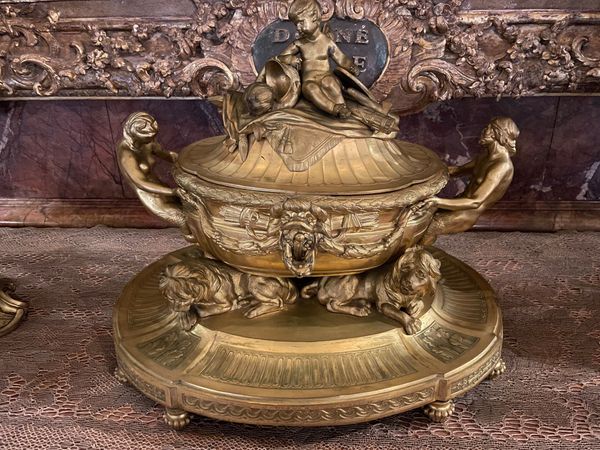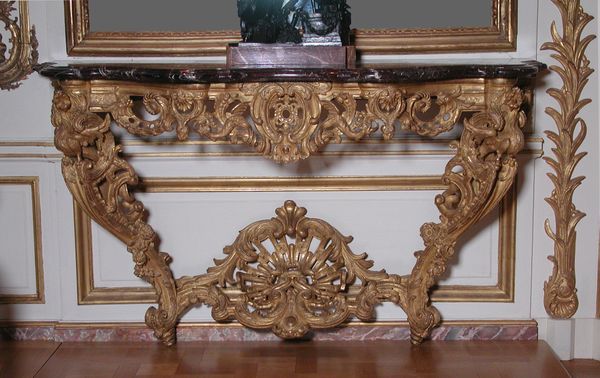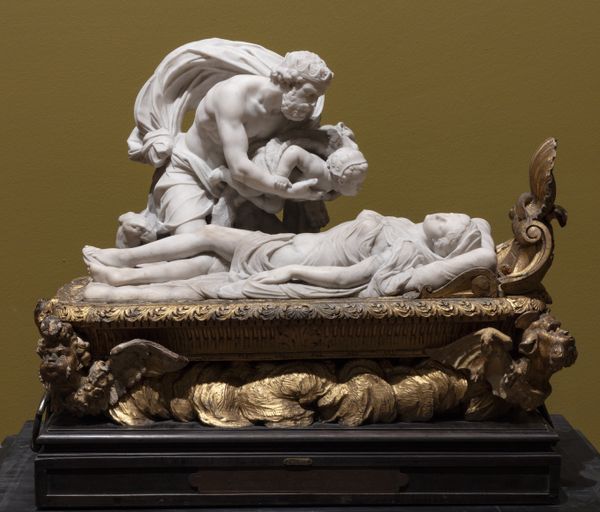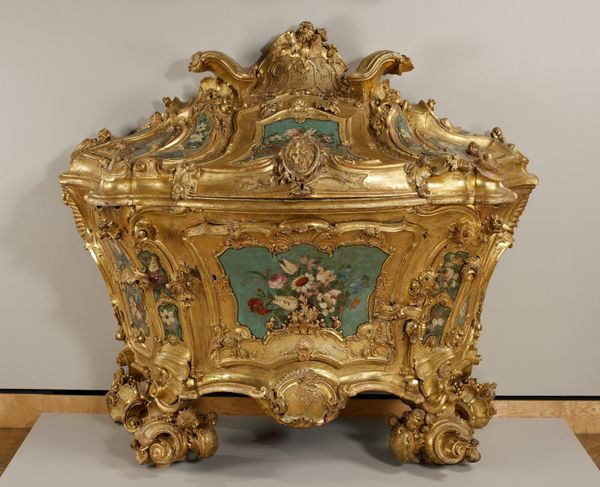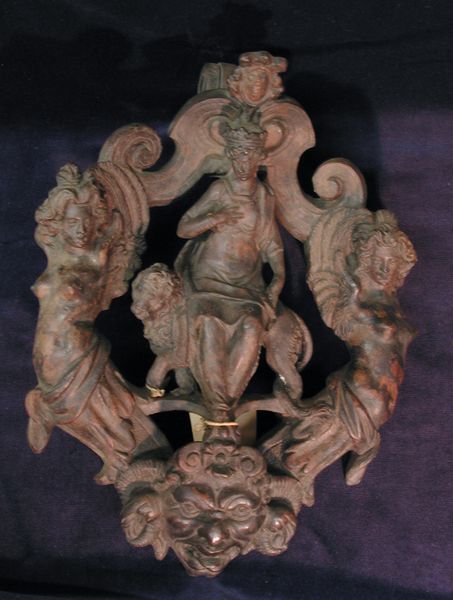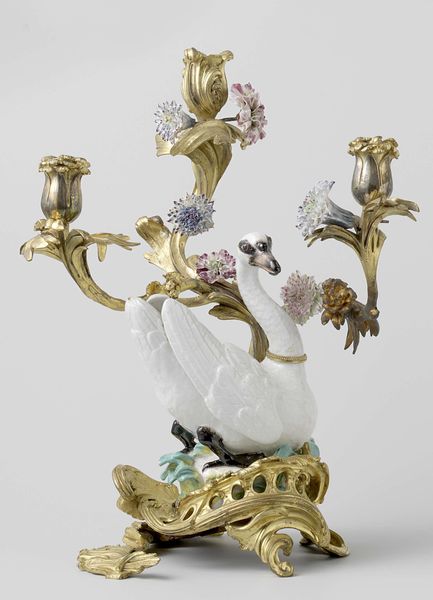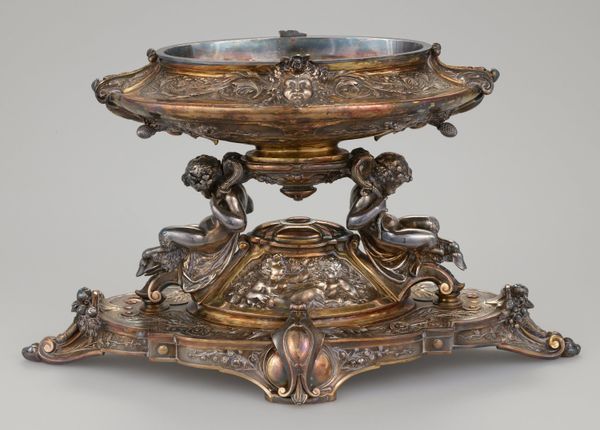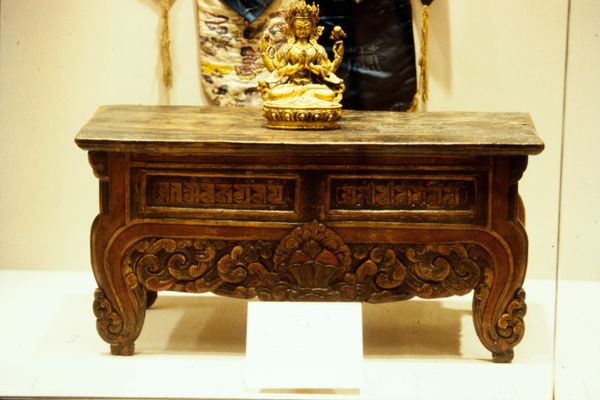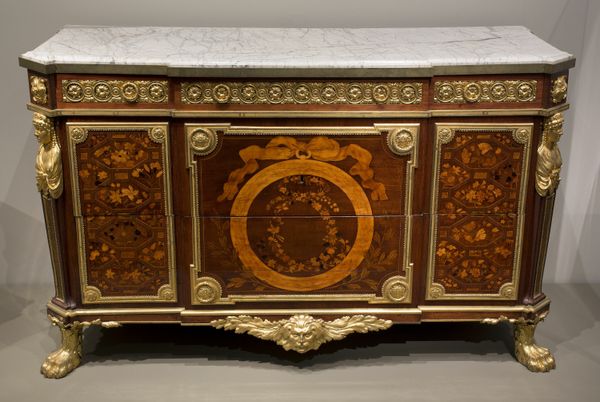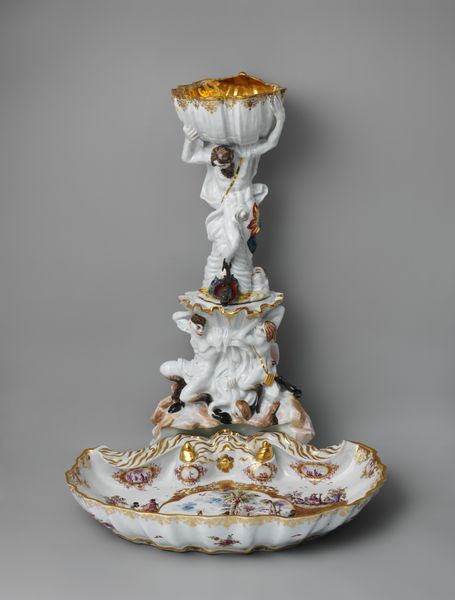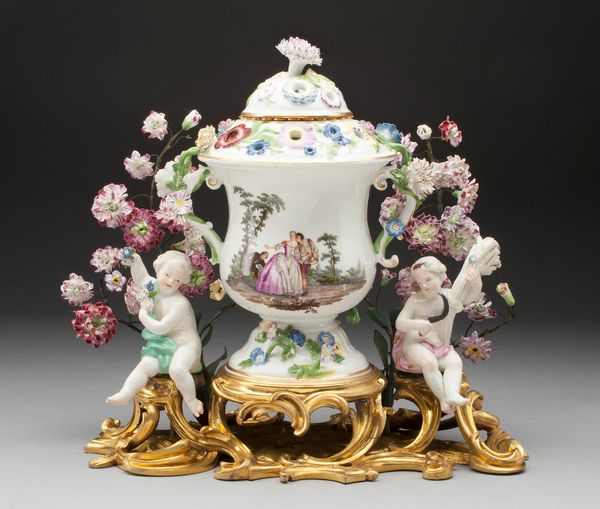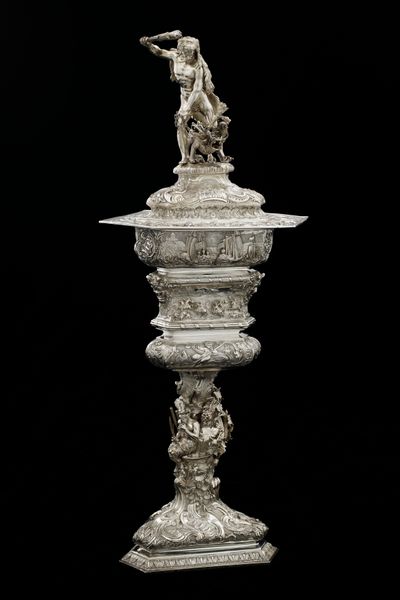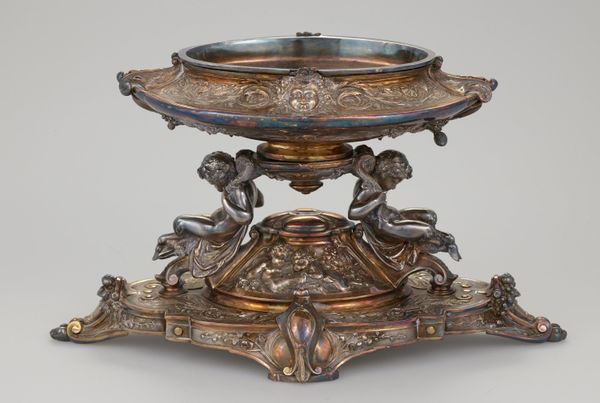
ceramic, bronze, sculpture
#
sculpture
#
ceramic
#
bronze
#
sculpture
#
decorative-art
#
rococo
Dimensions: H. 6 11/16 x W. 13 11/16 x D. 6 3/4 in. (17.0 x 34.8 x 17.1 cm)
Copyright: Public Domain
Editor: This beautiful "Inkstand", or "écritoire," crafted sometime between 1735 and 1753, involves both ceramic and bronze elements. It's attributed to Villeroy and lives at the Metropolitan Museum. I’m really struck by how opulent it is. What strikes you when you see this piece? Curator: I see a fascinating convergence of class and craft. The piece itself, an inkstand, signals literacy and power. But the materials – porcelain and bronze – and the decorative Rococo style point to the means of production of the wealthy elite. What was the social context behind decorative objects, such as this inkstand, as status symbols in 18th-century France? Editor: That’s a great point about status. Is the figure in the center supposed to signify a person of prominence, since it occupies the highest point? Or might it have something to do with exoticism and trade with the Far East, influencing the manufacturing processes here in Europe? Curator: Exactly. Porcelain, originally from China, was incredibly sought-after. European manufacturers like Villeroy were trying to replicate that "exotic" luxury, playing into the allure while also participating in a complex system of trade and labor. The bronze mounts suggest a local craftsmanship, further complicating notions of a single origin. What boundaries do you observe between "high art" and "decorative art" in this object? Editor: I never thought about those boundaries, but I do see how this questions the divisions, being both functional and incredibly ornate. The piece suggests mass manufacturing but also fine craftsmanship, which I think speaks volumes about its socio-historical period. Curator: Agreed. It reminds us that art is never separate from the conditions of its making, especially concerning labour. Editor: It has definitely shifted my understanding from pure aesthetics to production and manufacturing context. Curator: Indeed, considering production exposes the historical reality behind the aesthetic veneer of elite artworks.
Comments
No comments
Be the first to comment and join the conversation on the ultimate creative platform.
